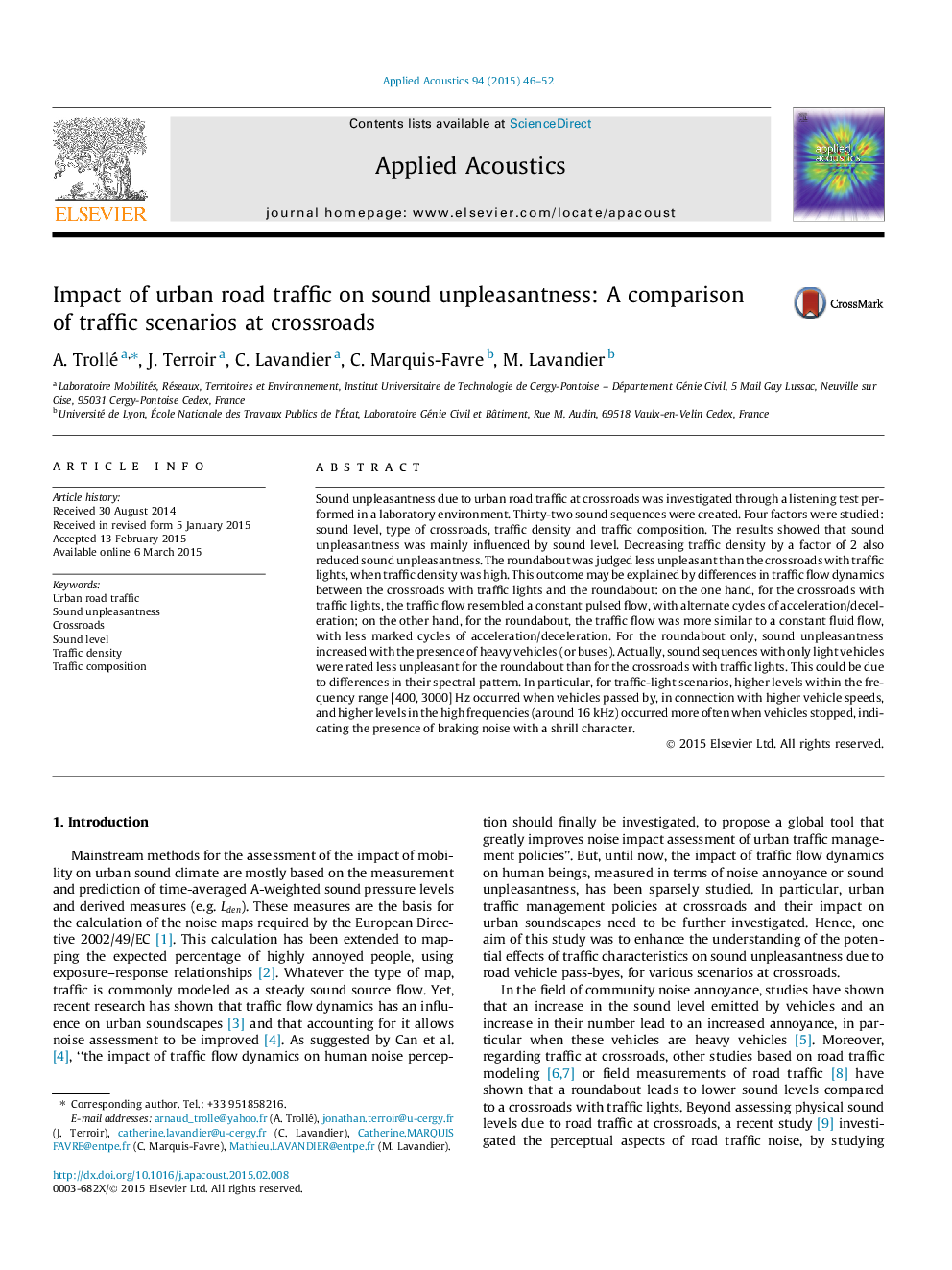| کد مقاله | کد نشریه | سال انتشار | مقاله انگلیسی | نسخه تمام متن |
|---|---|---|---|---|
| 7152674 | 1462414 | 2015 | 7 صفحه PDF | دانلود رایگان |
عنوان انگلیسی مقاله ISI
Impact of urban road traffic on sound unpleasantness: A comparison of traffic scenarios at crossroads
ترجمه فارسی عنوان
تاثیر ترافیک جاده ای شهری بر ناخوشایند بودن صدا: مقایسه سناریوهای ترافیکی در تقاطع ها
دانلود مقاله + سفارش ترجمه
دانلود مقاله ISI انگلیسی
رایگان برای ایرانیان
کلمات کلیدی
ترافیک جاده ای شهری، ناراحتی صدا، تقاطع ها میزان صدا، تراکم ترافیک، ترکیب ترافیک،
موضوعات مرتبط
مهندسی و علوم پایه
سایر رشته های مهندسی
مهندسی مکانیک
چکیده انگلیسی
Sound unpleasantness due to urban road traffic at crossroads was investigated through a listening test performed in a laboratory environment. Thirty-two sound sequences were created. Four factors were studied: sound level, type of crossroads, traffic density and traffic composition. The results showed that sound unpleasantness was mainly influenced by sound level. Decreasing traffic density by a factor of 2 also reduced sound unpleasantness. The roundabout was judged less unpleasant than the crossroads with traffic lights, when traffic density was high. This outcome may be explained by differences in traffic flow dynamics between the crossroads with traffic lights and the roundabout: on the one hand, for the crossroads with traffic lights, the traffic flow resembled a constant pulsed flow, with alternate cycles of acceleration/deceleration; on the other hand, for the roundabout, the traffic flow was more similar to a constant fluid flow, with less marked cycles of acceleration/deceleration. For the roundabout only, sound unpleasantness increased with the presence of heavy vehicles (or buses). Actually, sound sequences with only light vehicles were rated less unpleasant for the roundabout than for the crossroads with traffic lights. This could be due to differences in their spectral pattern. In particular, for traffic-light scenarios, higher levels within the frequency range [400, 3000]Â Hz occurred when vehicles passed by, in connection with higher vehicle speeds, and higher levels in the high frequencies (around 16Â kHz) occurred more often when vehicles stopped, indicating the presence of braking noise with a shrill character.
ناشر
Database: Elsevier - ScienceDirect (ساینس دایرکت)
Journal: Applied Acoustics - Volume 94, July 2015, Pages 46-52
Journal: Applied Acoustics - Volume 94, July 2015, Pages 46-52
نویسندگان
A. Trollé, J. Terroir, C. Lavandier, C. Marquis-Favre, M. Lavandier,
